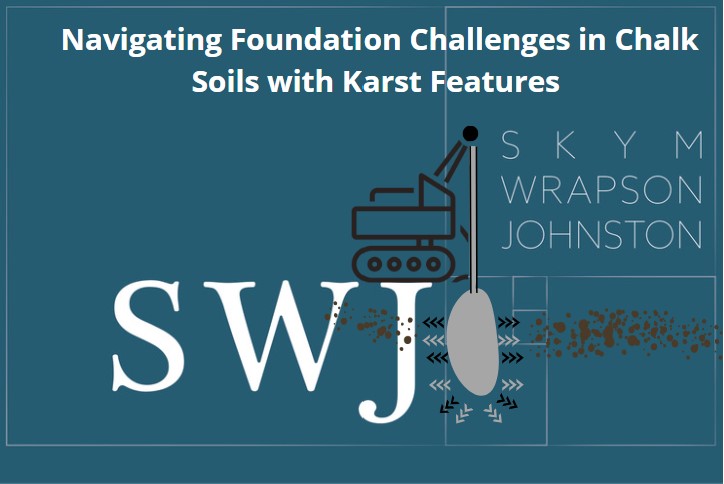Navigating Foundation Challenges in Chalk Soils with Karst Features
The dynamic geology of the south coast of England presents an intriguing challenge for construction professionals, particularly when it comes to foundation solutions. Spanning this region are distinct bands of Cretaceous chalk, forming a prominent part of the Chalk Group that underlies iconic areas like Salisbury Plain, the Isle of Wight, and the South Downs. The unique character of chalk soils often involves Karst features—resulting from the dissolution of bedrock. Therefore, when dealing with foundations on chalk soil, a comprehensive understanding of ground conditions is imperative to avoid over-engineering based on worst-case assumptions.
Our ongoing collaboration with Pye Homes on the Welborne Garden Village underscores this need for meticulous ground investigation. As part of this endeavor, we’re diligently probing the corners of each planned dwelling to detect any unique ground characteristics. Identifying potential risks and proactively addressing them can lead to substantial cost savings, underscoring the value of early risk mitigation. The investigation outcomes will pave the way for tailored solutions, eliminating the need for a blanket one-size-fits-all approach derived from a worst-case scenario.
In the realm of alternative foundation solutions, two noteworthy options are available:
- Piled Raft Solution: Piled solutions, while considered costlier due to associated expenses, offer substantial benefits. Screw piles, an alternative to traditional poured concrete piles, can be installed with relative ease using machinery. Irrespective of the pile type chosen, they serve as sturdy supports for a raft or platform, often in the form of a reinforced concrete slab. This slab rests atop a layer of compressible material, accommodating any potential heave and permitting the movement of elements such as tree roots.
- Grouting Soil: Compaction grouting, a technique involving high-pressure injection of a cementitious grout mix, significantly enhances ground load-bearing capacity. This process induces soil displacement and compaction, stabilizing voids as the grout column solidifies upon casing removal. Crucially, the grout displaces soil horizontally to prevent surface movement (heave). This method is a judicious choice for bolstering existing structures’ foundations, with minimal disruption to the landscape. Furthermore, the injection angles can be adjusted to access spaces beneath floor slabs and foundations.
For those in pursuit of cost-effective and precisely tailored foundation solutions, SWJ Consulting beckons you to engage with us. Our approach is rooted in understanding actual ground conditions, leading to effective and pragmatic solutions. Reach out to us at 02381 920656 or via email at mail@swjconsulting.co.uk. Let’s collaborate to navigate the intricate terrain of foundation challenges, ensuring your project’s success is built on a solid foundation.






